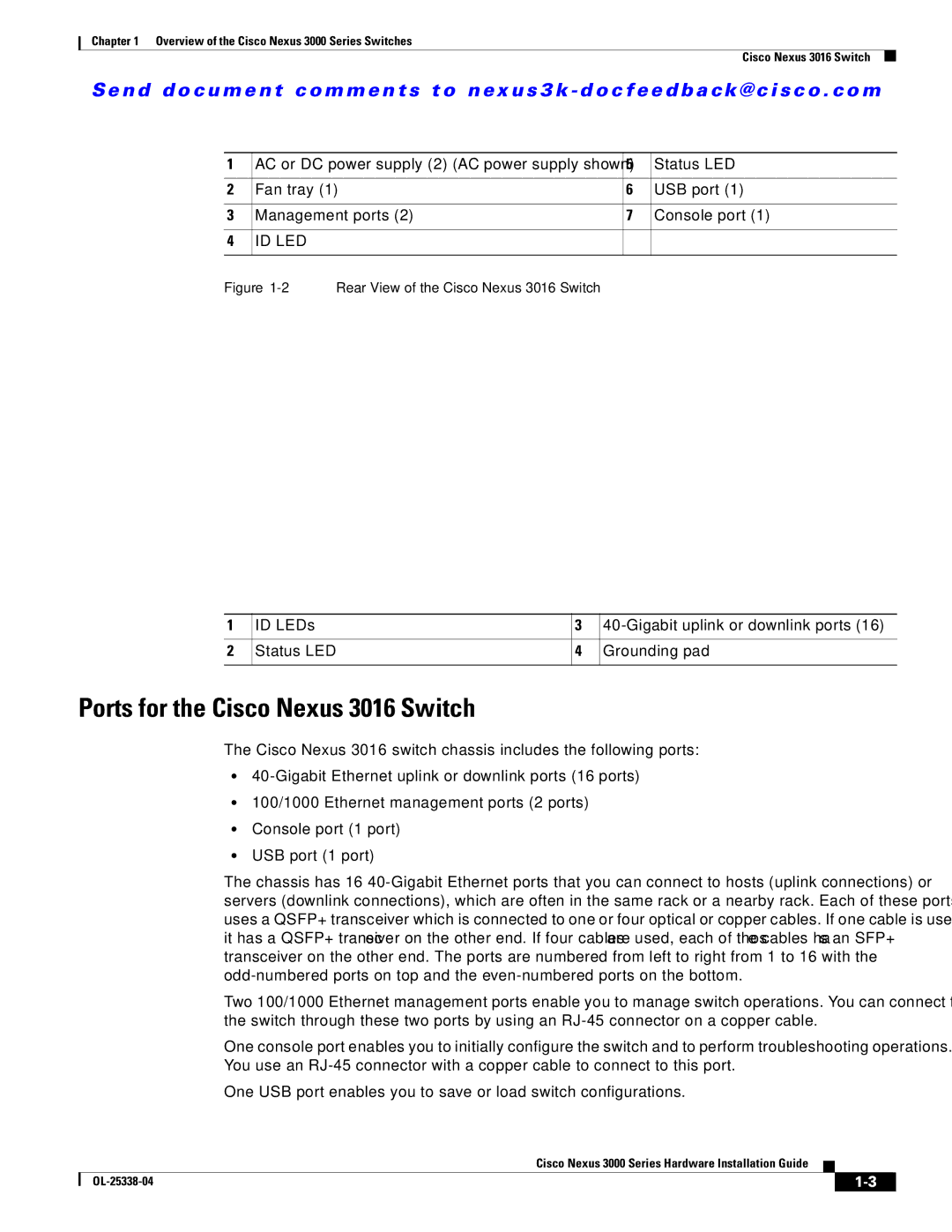
Chapter 1 Overview of the Cisco Nexus 3000 Series Switches
Cisco Nexus 3016 Switch
Se n d d o c u m e n t c o m m e n t s t o n ex u s 3 k - d o c f e e d b a ck @ c i sc o . c o m
1 | AC or DC power supply (2) (AC power supply shown) | 5 | Status LED | |
|
|
|
|
|
2 | Fan tray (1) |
| 6 | USB port (1) |
|
|
|
| |
3 | Management ports (2) | 7 | Console port (1) | |
|
|
|
|
|
4 | ID LED |
|
|
|
|
|
|
|
|
Figure | Rear View of the Cisco Nexus 3016 Switch |
|
| |
1 | ID LEDs | 3 | |
|
|
|
|
2 | Status LED | 4 | Grounding pad |
|
|
|
|
Ports for the Cisco Nexus 3016 Switch
The Cisco Nexus 3016 switch chassis includes the following ports:
•
•100/1000 Ethernet management ports (2 ports)
•Console port (1 port)
•USB port (1 port)
The chassis has 16
Two 100/1000 Ethernet management ports enable you to manage switch operations. You can connect to the switch through these two ports by using an
One console port enables you to initially configure the switch and to perform troubleshooting operations. You use an
One USB port enables you to save or load switch configurations.
Cisco Nexus 3000 Series Hardware Installation Guide
|
| ||
|
|
